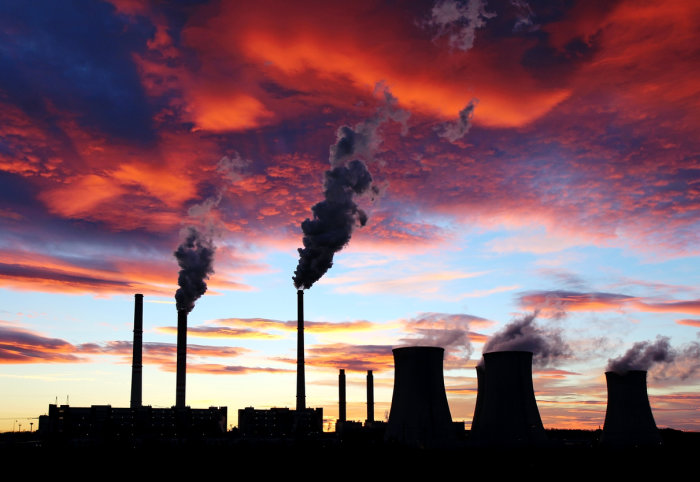Delaying greenhouse gas cuts could lead to big increases in economic costs

Avoiding dangerous climate change requires action now to avoid reliance on risky and expensive technologies in the future, a new study has concluded.
The paper, published today in the journal of Annual Review of Environment and Resources, warns that the target of limiting global warming to 1.5 degrees Celsius above pre-industrial levels could soon become too economically expensive to justify, despite the benefits it could provide to natural ecosystems, water resources, agriculture, and human health, especially in poorer regions of the world.
The authors, from Imperial College London, London School of Economics and Political Science (LSE), and the University of East Anglia, assessed almost 200 published academic papers on climate change, including recent studies about the economics of limiting global warming to 1.5°C.
They argue that unless we urgently cut emissions of carbon dioxide (CO2) to a level consistent with a 1.5°C temperature rise, then governments would have to invest heavily in greenhouse gas removal technologies, which actively reduce the amount CO2 in the atmosphere, or in risky solar radiation management.
The environmental benefits of keeping global warming below 1.5°C compared to 2°C, are striking. So even though it will be significantly more challenging to achieve the lower temperature goal, we must not close the door on it. Dr Ajay Gambhir
They warn that the remaining carbon budget – the amount of CO2 we have left to emit – consistent with a 1.5°C world is very small and the global economy would need to be decarbonised "at an unprecedented scale to stay within it."
The paper concludes that because of large uncertainties in the economic costs and benefits , there cannot yet be a clear answer about the net benefit of limiting global warming to 1.5°C instead of 2°C. Nonetheless, the authors draw attention to the significant benefits for natural ecosystems, such as the preservation of summer Arctic sea ice and coral reefs.
“The environmental benefits of keeping global warming below 1.5°C compared to 2°C, are striking. So even though it will be significantly more challenging to achieve the lower temperature goal, we must not close the door on it,” said co-author Dr Ajay Gambhir, Senior Research Fellow at the Grantham Institute - Climate Change and the Environment. “This means we need to step up the immediacy and pace of action.”
Achieving 1.5?C
National governments are currently taking part in the Talanoa Dialogue and are reviewing their actions towards keeping global average warming below 2°C and pursuing efforts to limit the temperature increase to 1.5°C, which they committed to as part of the Paris Agreement on climate change.
Carbon pricing is a crucial economic method to tackle global warming, whereby polluters must pay a fixed amount per tonne of CO2 they emit into the atmosphere. The 'price' set must be high enough to encourage polluters to actively work to reduce their emissions. The paper highlights that the carbon price consistent with limiting global warming to 1.5°C would need to be more than $100 per tonne of CO2 by 2020, which is about three times higher than the price needed to avoid warming of more than 2°C.
The paper also discusses more interventionalist policies that could help keep us within 1.5°C, such as investing in greenhouse gas removal technologies, but notes there are limitations and associated risks. For example, direct air capture, which captures CO2 from the air and stores it, is still costly and unproven at scale; and bioenergy with carbon capture and storage, whereby plants are burned for energy and the resulting carbon emissions are captured and stored, presents challenges for agriculture, sustainability and biodiversity.
Solar radiation management is also discussed in the paper, which could involve blocking out some sunlight by injecting aerosol particles into the atmosphere in order to counteract the warming caused by rising levels of greenhouse gases. This method is cheaper than CO2 removal technologies, but it is largely untested and has significant associated risks.
Policy makers must swiftly decide how to ratchet up their climate ambitions to minimize the increase in costs and risks. Lead author Professor Simon Dietz, of the Grantham Research Institute on Climate Change and the Environment at LSE concluded: "Unless we discover a much cheaper way to remove CO2 from the air, and if we want to avoid risky methods of blocking out sunlight, we have to pursue the goal of 1.5°C now.”
Adapted from a press release by LSE.
-
‘The Economics of 1.5 ?C Climate Change’ by Simon Dietz, Alex Bowen, Baran Doda, Ajay Gambhir, and Rachel Warren is published in Annual Review of Environment and Resources.
Article text (excluding photos or graphics) © Imperial College London.
Photos and graphics subject to third party copyright used with permission or © Imperial College London.
Reporter
Ms Abbie Stone
Centre for Environmental Policy